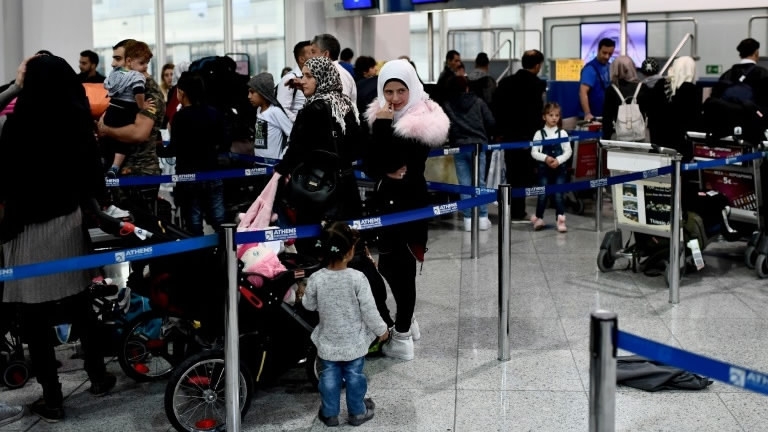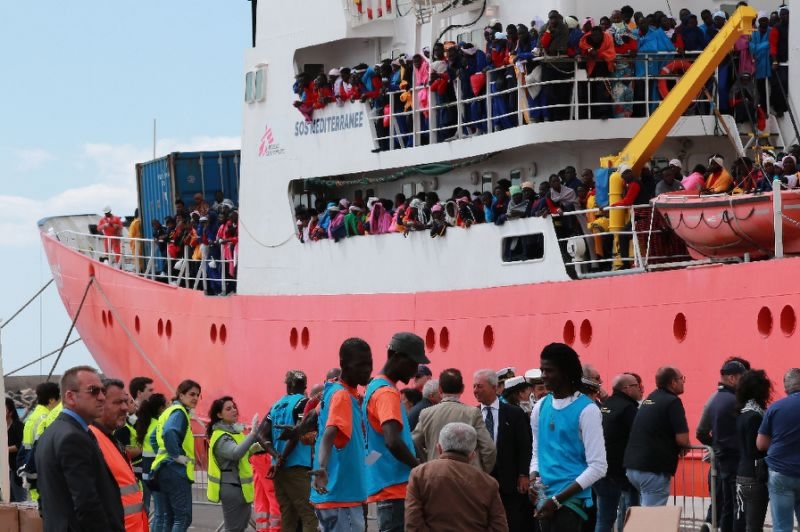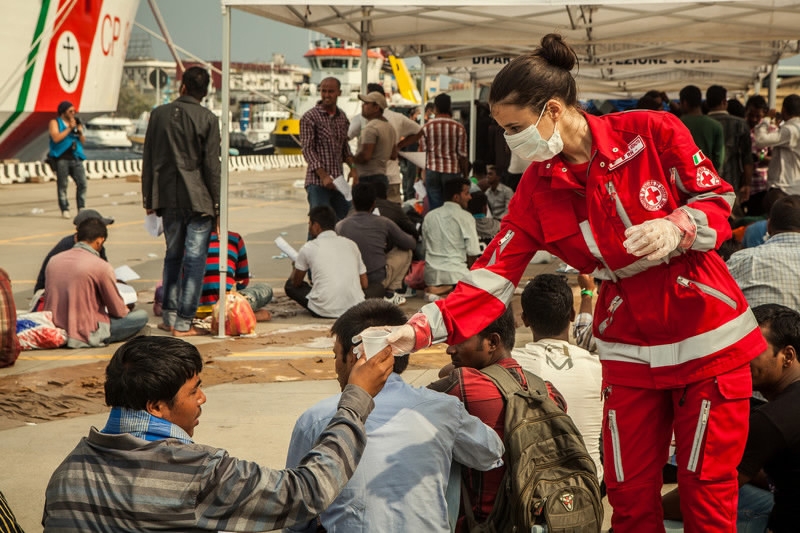
Politics
16:45, 10-Jan-2018
Southern EU leaders to tackle thorny migration issue
CGTN

Leaders of Europe's southern border nations, which serve as main reception points for refugees flooding into the continent, are due to gather in Rome on Wednesday evening to tackle the seemingly intractable problem.
It will be the fourth meeting of the "Southern Seven" –Cyprus, France, Greece, Italy, Malta, Portugal and Spain –since Greece's Alexis Tsipras launched the initiative in September 2016. The group met twice last year, in Lisbon and Madrid.
The main agenda item is how to stem the flow of migrants from war-torn and impoverished countries.
Other issues are expected to range from the future of the eurozone, to efforts to propel growth, employment and investment, as well as preparation for the 2019 European Parliament elections.
 File photo of a rescue ship carrying people crossing from Libya to Italy. /AFP Photo
File photo of a rescue ship carrying people crossing from Libya to Italy. /AFP PhotoFor Italy, 2017 was a turning point: the country went from large-scale arrivals in the first six months to a sharp drop-off, thanks to controversial agreements in Libya.
In the end some 119,000 people landed there, down 35 percent on 2016.
For its part, Spain saw a notable increase in Algerians and Moroccans sailing in, from 6,000 attempting the crossing in 2016 to nearly 23,000 picked up last year.
In Greece, an accord struck between the EU and Turkey limited the number of arrivals to 28,800 people, six times fewer than in 2016, but it did not solve the problem of how to care for those who had already made the journey.
Under pressure
The death toll in the Mediterranean dropped, from nearly 5,000 people dead or reported missing during crossings in 2016, to 3,116 in 2017.
But asylum applications, and the inevitable delays and lengthy appeals, have placed great strain on some countries.

Aid workers distribute help to migrants in Libya. /Photo from International Federation of Red Cross and Red Crescent Societies
Aid workers distribute help to migrants in Libya. /Photo from International Federation of Red Cross and Red Crescent Societies
Greece is struggling to deal with over 50,000 migrants and refugees, 14,000 of whom are crammed into tents or centers on overcrowded Aegean islands.
In Italy, the authorities have stopped providing details on the number of asylum seekers housed in its reception centers, with the last available figures showing there were almost 200,000 last spring.
Despite a proliferation of small structures aimed at improving integration, tens of thousands of people are still forced to idle away their days in large centers as a climate of mistrust and racism grows ahead of the general election on March 4.
Spain has faced a backlash over the state of the detention centers where migrants are held before being expelled.
Anger was fueled in December after the suicide of an Algerian who was locked up in a prison in Andalusia along with nearly 500 other migrants for lack of space elsewhere.
Humanitarian corridors
The southern European countries have urged time and again for the migrant burden to be shared across the EU.
"Italy can no longer continue to pay for everyone, in financial terms as well as in terms of political effort," Italian Finance Minister Pier Carlo Padoan said on Monday in Brussels.
Interior Minister Marco Minniti, the man behind the morally questionable yet Brussels-backed deal with Libya to block migrants from setting out for Europe, has urged the EU to follow Italy's lead on humanitarian corridors.
Three days before Christmas, Rome was the first to welcome a group of 162 Ethiopian, Somali and Yemeni refugees who directly flew in from crisis-hit Libya.
Some 10,000 refugees are expected to follow in 2018, Minniti said, provided they are spread across the EU.
8135km
Source(s): AFP

SITEMAP
Copyright © 2018 CGTN. Beijing ICP prepared NO.16065310-3
Copyright © 2018 CGTN. Beijing ICP prepared NO.16065310-3